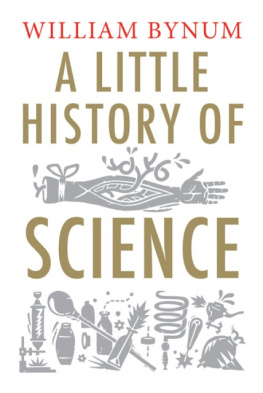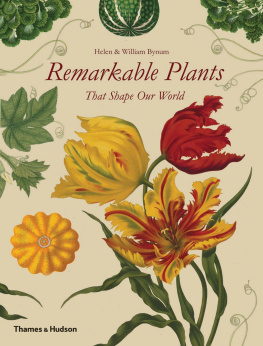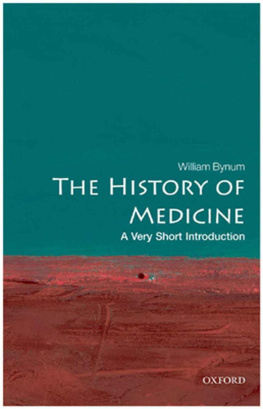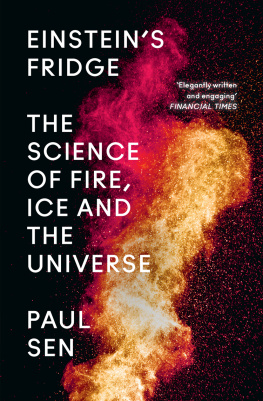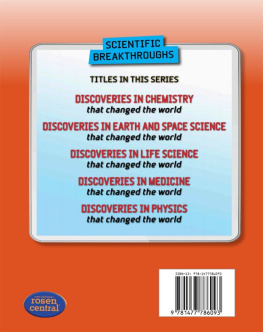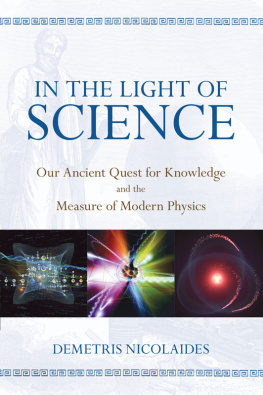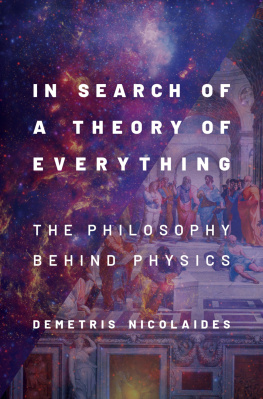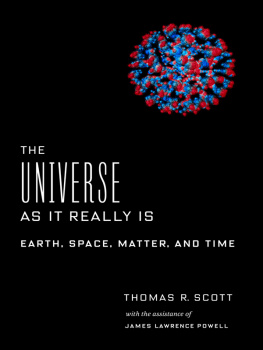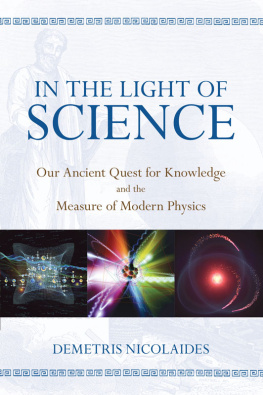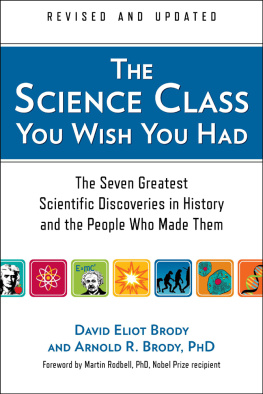

For Alex and Peter

Copyright 2012 William Bynum
All rights reserved. This book may not be reproduced in whole or in part, in any form (beyond that copying permitted by Sections 107 and 108 of the US Copyright Law and except by reviewers for the public press) without written permission from the publishers.
For information about this and other Yale University Press publications, please contact:
U.S. Office:
Europe Office:
Set in Minion Pro by IDSUK (DataConnection) Ltd
Printed in Great Britain by TJ International Ltd, Padstow, Cornwall
Library of Congress Cataloging-in-Publication Data
Bynum, W. F. (William F.), 1943
A little history of science / William Bynum.
pages cm
Includes bibliographical references and index.
ISBN 978-0-300-13659-3 (hardback)
1. ScienceHistory. 2. Science and civilization. I. Title.
Q125.B98 2012
509dc23
2012026738
A catalogue record for this book is available from the British Library.
10 9 8 7 6 5 4 3 2 1
Contents
CHAPTER 1
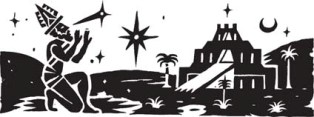
In the Beginning
S cience is special. It's the best way we have of finding out about the world and everything in it and that includes us.
People have been asking questions about what they have seen around them for thousands of years. The answers they have come up with have changed a lot. So has science itself. Science is dynamic, building upon the ideas and discoveries which one generation passes on to the next, as well as making huge leaps forward when completely new discoveries are made. What hasn't changed is the curiosity, imagination and intelligence of those doing science. We might know more today, but people who thought deeply about their world 3,000 years ago were just as smart as we are.
This book isn't only about microscopes and test tubes in laboratories, although that is what most people think of when they think of science. For most of human history, science has been used alongside magic, religion and technology to try to understand and control the world. Science might be something as simple as observing the sun rise each morning, or as complicated as identifying a new chemical element. Magic could be looking at the stars to foretell the future, or maybe what we would call a superstition, like keeping out of the path of a black cat. Religion might lead you to sacrifice an animal to appease the gods, or to pray for world peace. Technology might involve knowing how to light a fire or build a new computer.
Science, magic, religion and technology were used by the earliest human societies that settled in river valleys across India, China and the Middle East. The river valleys were fertile, which allowed crops to be planted each year, enough to feed a large community. This allowed some people in these communities enough time to focus on one thing, to practise and practise, and become expert at it. The first scientists (though they wouldn't have been called that at the time) were probably priests.
In the beginning, technology (which is about doing) was more important than science (which is about knowing). You need to know what to do, and how to do it, before you can successfully grow your crops, make your clothes, or cook your food. You don't need to know why some berries are poisonous, or some plants edible, to learn how to avoid the one and grow the other. You don't have to have a reason why the sun rises each morning and sets each evening, for these things to happen, each and every day. But human beings are not only able to learn things about the world around them, they are also curious, and that curiosity lies at the heart of science.
We know more about the people of Babylon (in present-day Iraq) than we do about other ancient civilisations, for a simple reason: they wrote on clay tablets. Thousands of these tablets, written almost 6,000 years ago, have survived. They tell us how the Babylonians viewed their world. They were extremely organised, keeping careful records of their harvests, stores, and state finances. The priests spent much of their time looking after the facts and figures of ancient life. They were also the main scientists, surveying land, measuring distances, viewing the sky, and developing techniques for counting. We still use some of their discoveries today. Like us, they used tally marks to keep count; this is when you make four vertical marks and cross through these diagonally with a fifth, which you might have seen in cartoons of a prison cell, made by the prisoners keeping count of how many years they have been locked up. Far more importantly, it was the Babylonians who said there should be sixty seconds in a minute and sixty minutes in an hour, as well as 360 degrees in a circle and seven days in the week. It is funny to think that there is no real reason why sixty seconds make a minute, and seven days make a week. Other numbers would have worked just as well. But the Babylonian system got picked up elsewhere and it has stuck.
The Babylonians were good at astronomy that is, examining the heavens. Over many years they began to recognise patterns in the positions of stars and planets in the sky at night. They believed that the earth was at the centre of things, and that there were powerful magical connections between us and the stars. As long as people believed that the earth was the centre of the universe, they didn't count it as a planet. They divided the night sky into twelve parts, and gave each part a name associated with certain groups (or constellations) of stars. Through a heavenly game of Join-the-dots, the Babylonians saw pictures of objects and animals in some constellations, such as a set of scales and a scorpion. This was the first Zodiac, the basis of astrology, which is the study of the influence of the stars upon us. Astrology and astronomy were closely linked in ancient Babylon and for many centuries afterwards. Many people today know which sign of the Zodiac they were born under (I am a Taurus, the bull) and read their horoscopes in newspapers and magazines for advice about their lives. But astrology is not part of modern science.
The Babylonians were only one of several powerful groups in the ancient Middle East. We know most about the Egyptians, who settled along the River Nile as early as 3,500 BC . No civilisation before or since was so dependent on a single natural feature. The Egyptians relied on the Nile for their very existence, for every year as the mighty river flooded it brought rich silt to replenish the land around its banks, and so prepare it for the next year's crops. Egypt is very hot and dry, so a lot of things have survived for us to admire and learn from today, including many pictures, and a kind of pictorial writing, called hieroglyphics. After Egypt was conquered first by the Greeks and then by the Romans, the ability to read and write hieroglyphs disappeared, and so for almost 2,000 years the meaning of their writing was lost. Then, in 1798, a French soldier found a round tablet in a pile of old rubble in a little town near Rosetta, in the north of Egypt. It had a proclamation written in three languages: hieroglyphics, Greek, and an even older form of Egyptian writing called demotics. The Rosetta Stone came to London, where you can see it today in the British Museum. What a breakthrough! Scholars could read the Greek and therefore translate the hieroglyphs, decoding the mysterious Egyptian writing. Now we could really begin to learn about the ancient Egyptians beliefs and practices.
Next page
